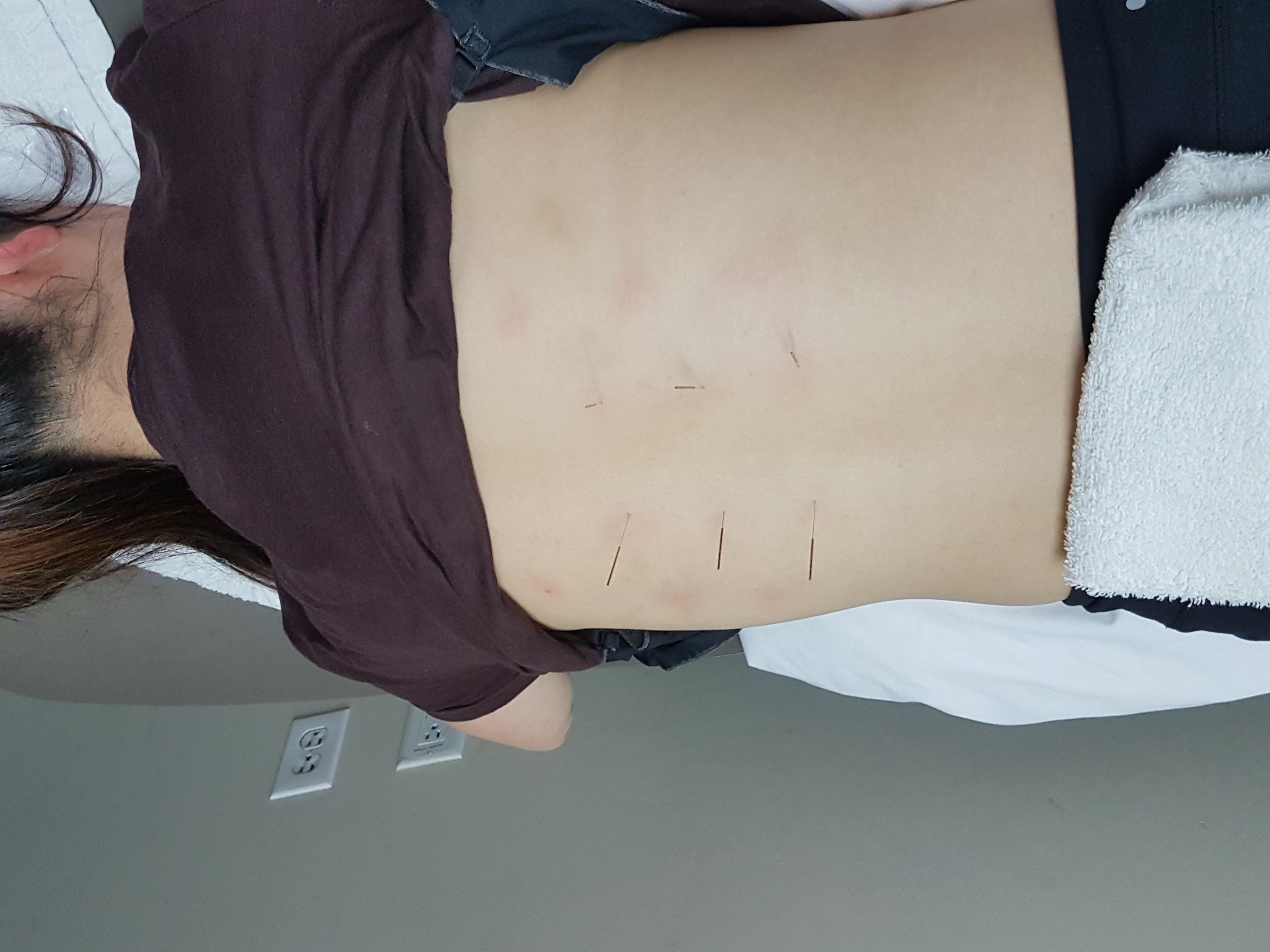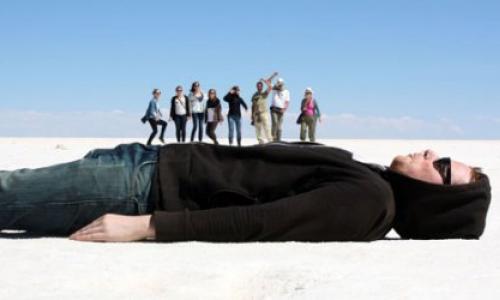
As a person with a small stature, a career in physiotherapy seemed bleak, as I would be severely limited in performing treatments such as manual therapy, manual mobilization and manipulation. I am much more disadvantaged than a person who is tall with a strong build. However, during my co-op term at Lynn Valley Orthopaedic & Sports Physiotherapy Centre, I came to realize that my future in physiotherapy wasn’t as dim as I feared it would be, as I discovered a type of therapy that many physiotherapists use, called Intramuscular Stimulation (IMS).

IMS is an invasive, dry needling technique that is used to relieve myofascial muscle pain by stimulating trigger points, which are “highly localized, hyperirritable locations in a palpable, taut band of skeletal muscle fibers” (Morihisa, Eskew, McNamara, & Young, 2016, p.1). In comparison to a regular massage, which is limited to alleviating tension in superficial muscles, needles are able to penetrate further into a patient’s body, and thus able to relieve tension in the deeper muscles of the body. When the needle is inserted, the muscle may tighten before it relaxes. This results in a twitching sensation during the IMS session, and soreness in the muscle can occur subsequently. The tighter a muscle is, the sorer the muscle will be after treatment due to the increased spasms the needle can induce. Different sized needles are used for different body parts, and depending on the size of the patient, the length of the needle can also vary.
Since I was experiencing pain and stiffness in my back recently, I decided to try IMS at Lynn Valley Physiotherapy to help alleviate my symptoms. Both my thoracic and lumbar spine were tense and sore, and I was able to receive treatment for both areas from two of my colleagues, both highly-qualified physiotherapists. For my lumbar region, my physiotherapist targeted my multifidus, a deep extensor muscle in the back; my piriformis, a muscle that is part of the gluteal region; and my gluteus medius, one of the three gluteal muscles. The body has an amazing innate ability to compensate for muscle groups that are lacking in strength and mobility, and lack of range of motion of a joint. In my case, my lower back has suffered the consequences of compensation—the tightness of my glutes has increased muscle work in my lower back, which has contributed the soreness and discomfort in my spine. During the needling session, he also put an electrical stim, or current, through the needles for a short period of time. This resulted in being able to further control the contraction and relaxation of the deeper muscles in the back, a sensation that felt similar to someone gently hammering my spine.
As for the thoracic region, I had another physiotherapist, with the same IMS training as the previous one, perform IMS. He targeted the muscles close to the thoracic vertebrae, and also the upper fibre trapezius, which is notorious for being one of the tenser muscles in the back. It definitely lived up to its reputation; my shoulders were sore for the next three days, and practically tender to the touch. This physiotherapist was much more aggressive than the previous one with his needling technique. It felt like I was being stabbed, in comparison to gently kneaded. This shows that there can be large differences in technique even with the same training, which can affect recovery time.
After my soreness settled from both areas that went through treatment, my back did feel loosened and my range of motion seemed to improve. Of course, IMS was not the single magical treatment that fixed all my problems; I had to do exercises at home to help with my recovery, and I had to cut down hours at my other job as well. However, I can confidently say that IMS has helped with alleviating the stiffness in my back and my episodes of pain have been less frequent. According to a recent review, “dry needling is effective in reducing pain associated with lower quarter trigger points in the short-term” (Morihisa et al., 2016, p. 1), lower quarter being defined as the joints inferior to the thoracolumbar junction, the space between the twelfth thoracic vertebra and the first lumbar vertebra. Clearly, there is evidence that IMS is a powerful technique to help alleviate pain in the lumbar region, and experiencing it first hand has turned me into a strong believer in the effectiveness of needles.
IMS has reassured me of my aspirations of becoming a successful physiotherapist. With my small frame, I was afraid that I would not be as able to provide effective treatments to patients, but with the help of needles, my future in physiotherapy still holds strong, as the physical size of the practitioner does not affect the effectiveness of IMS treatment. If I can achieve my goal of becoming a physiotherapist, IMS is definitely one of the many techniques I would learn for my career. For those who are interested in giving IMS a try, I would highly recommend it. Be warned, during treatment it’ll feel as if you’ve made a terrible mistake because it is definitely not the most comfortable being poked with needles. However, as I’ve experienced, the results can be quite amazing.
References
Morihisa, R., Eskew, J., McNamara, A., & Young, J. (2016). Dry Needling in Subjects with Muscular Trigger Points in the Lower Quarter: A Systematic Review. International Journal of Sports Physical Therapy, 11(1), 1–14. Retrieved from https://www.ncbi.nlm.nih.gov/pmc/articles/PMC4739038/
Beyond the Blog
-
To learn more about opportunities like Serren's, check out the SFU's (BPK) Co-op site.














